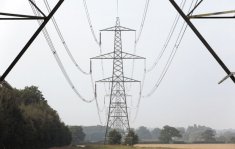
Systep’s study indicates that flows on the 500 kV lines between Polpaico and Cardones could reach up to 1,900 MW in months of low hydroelectricity.
New capacity entry would require expansion of the Polpaico – Cardones line by 2030
The Polpaico-Cardones line currently being developed by InterChile, a subsidiary of the ISA group, would be insufficient to cope with the new capacity that would be added by 2030.
According to the study prepared by the Chilean consulting firm Systep, by 2030 there would be maximum solar and wind generation of up to 3,300 MW from the Pan de Azúcar 500 kV bus bar to the north. Considering this figure, the flows in the 500 kV lines between Polpaico and Cardones could reach up to 1,900 MW in months of low hydroelectricity, which is equivalent to 126% of their total capacity with N-1 criteria. In the months of high hydroelectric generation, this figure drops to 76%.
The study considers a “conservative” NCRE penetration, where the energy that would be installed by 2030 is only that which would be required according to the 2025 law, i.e. 20% of the total annual demand. This percentage would be composed of 8.3% solar energy, 0.7% geothermal energy, 5.5% wind energy, 2.4% biomass and 3.1% mini-hydro.
The conclusion of the study in terms of transmission is shared by other actors in the sector, such as the executive technical director of CDECSIC, Andrés Salgado. “If all these renewable projects that have an approved environmental resolution materialize, the amount of power that can be injected in the north is effectively quite large and the line could be short, which means we could need more capacity in a few more years, but that has to be accompanied by a growth in demand,” he said.
The study also concluded that by 2030 marginal costs would have differences of between 6% and 16% between day and night and that some LNG plants will be exposed to high start-up and shutdown rates. For example, in the case of Kelar, the consortium formed by Korea Southern Power Co. (65%) and Samsung C&T Corp. (35%), or E-CL’s U16, could have a daily turn-off and turn-on between May and October.





